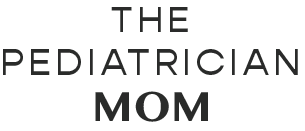Safety
What are the best bug sprays for kids? And are insect repellents even safe? Here is a pediatrician’s take on exactly what parents need to know (and some info on which products a pediatrician mom uses on her own kids).
Beyfortus (nirsevimab-alip) is a monoclonal antibody shot that effectively protects babies from RSV but there is a great deal of confusion and misinformation about what it is and how it works.
It is not a vaccine. Here is a clear explanation and a review of the evidence for parents.
Should parents worry about “dry drowning”? What are drowning symptoms in kids? Should you worry if your child chokes and coughs while swimming? Here are some answers from a pediatrician mom.
Top tips to keep children safe around water and prevent drowning, from a pediatrician mom.
Here is what to do if your child tests positive for Covid. An article with clear tips for parents and a free download.
Low effort babyproofing tips that provide major payoff in terms of keeping your child safe, and maintaining your peace of mind.
Any infant death is awful. Little is known right now about why some infants are more susceptible to SIDS than others. The truth is that this research is promising, but it doesn’t change much from a practical perspective.
What products should you have to make sure your child stays safe in the sun? Here are my top tips on everything from sunscreen to UPF clothing to hats!
Apply the sunscreen 20-30 minutes before you go outside, and then make sure to re-apply after 2 hours, or after your child has been in the water. Using a make-up applicator brush or sponge makes applying sunscreen much easier and less-messy.
As vaccine eligibility becomes an option, I’ve received questions about whether I will vaccinate my 6 year old. YES, I will. This is how I made my decision.
Oral rehydration can be a good approach for mild symptoms but it is important to discuss with your pediatrician to determine at what point you need to step up the level of care.
Talk through what might happen during a fire with your children as matter-of-factly as possible. They may be woken up by the alarm, and they should not panic. Tell them that they should stay low to the ground, and check the door to see if it is hot. They should pick the safest, smoke-free route out. If the door is hot, KEEP IT CLOSED, place a wet towel under the door and choose the alternate route for escape.
When you think of children and holiday decorations, you have to be sure that everything is as safe as possible. Children have a way of finding trouble. What is the best way to childproof your holiday set-up without sacrificing the magic of your decorations? Here are some pediatrician-approved tips.
COVID-19 is still out there. Your choice of activity depends on several factors: your family’s risk, your community prevalence of COVID-19, and how adherent your children will be to the guidelines.
Life is a long game, and this is a weird and challenging time. But our children are more resilient than we think. They will be learning more than just schoolwork from us and their teachers this year: they’ll be learning some resilience, some flexibility, and that they are stronger than they believe. And we want them to learn to give themselves grace. So let’s begin to model that ourselves.
In most cases, you will also get to meet the anesthesiologist before your child’s procedure (sometimes for a pre-op visit a few days before, and always in the pre-operative area). This is a good opportunity to discuss risks and what you can do to keep your child comfortable before, during and after the procedure.
Pick out a dedicated space for home school and organize it so your child has easy access to all the tools they need, along with reliable internet access and a clock. Ambiance and consistency are key. Let your child personalize it so they enjoy the space. Remove distractions. Plan a consistent routine for before and during the school day which allows for breaks and snacks.
The correct way to wear a mask is to cover your nose and mouth fully. It is not safe for children under 2 to wear a mask.
School decisions need to be made taking into account the local infection rates, adherence to public health guidelines such as masking and social distancing, and individual/family risk factors.
Surgical masks or cloth masks with at least 3 layers are recommended by the World Health Organization.
COVID-19 is transmitted primarily by aerosols, or small droplets, that are ejected when speaking, singing, coughing and sneezing. People with COVID-19 can be asymptomatic and unaware that they are contagious. Wearing a mask protects those around you because it prevents those aerosols from being distributed in the air.
The return-to-school decision must be based on multiple factors, including local infection rates, testing capacity and turn-around, individual/family risk factors and student needs. It also needs to be reassessed frequently.
Whether schools should be offering in-person schooling is a separate question from whether any particular family should choose to return to school this fall.
The American Academy of Pediatrics recommends introducing solids when infants are developmentally ready, usually between 4 and 6 months of age. Signs of readiness include good head control, losing the tongue thrust reflex, and showing interest in the solid food!
Learning to ride a bike is an important milestone and staying active is obviously something pediatricians encourage. But a recent study from the University of Michigan found that nearly 1 in 5 parents admit to not enforcing helmet-wearing when their children are on their bikes.


























Learn how to recognize and respond to heat illness in children, including key warning signs of heat exhaustion and heat stroke. Pediatrician-approved tips for keeping your child safe during summer heatwaves.